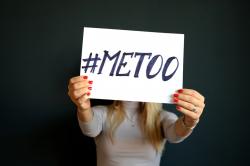 After revelations of sexual misconduct by a number of high-power executives, media personalities and politicians last year spawned the #MeToo movement, defense lawyers are predicting a record number of sexual harassment lawsuits will be filed against employers in the coming year.
After revelations of sexual misconduct by a number of high-power executives, media personalities and politicians last year spawned the #MeToo movement, defense lawyers are predicting a record number of sexual harassment lawsuits will be filed against employers in the coming year.
The #MeToo movement has emboldened women who have been sexually harassed, abused or worse by a work superior or co-worker to come out and tell their stories. Any employer whose workers were subjected to this kind of behavior is at risk of being sued, regardless of whether or not the employer knew about the incident.
The costs of sexual harassment lawsuits can debilitate, if not sink a small business, considering the high settlement costs, attorney fees – and even awards if the cases go to trial.
As an employer you should already have anti-harassment policies in place, including a safe way for an employee to report harassment without fear of losing their job. In the #MeToo era, you should revisit your policy and consider new training for all employees, supervisors and management. Companies must be ready to quickly address sexual harassment, assault and discrimination in the workplace as it is uncovered.
What’s happening
A movement that started out in very high-profile, public industries and in politics will soon spread into the hallways of everyday American businesses.
The #MeToo movement has exposed unacceptable predatory behavior in the workplace. It has also shown that there is no room for tolerance of sexual harassment.
There are different types of sexual harassment and as an employer you should be aware of the differences.
Title VII of the Civil Rights Act of 1964 is the federal law which prohibits employers from discriminating against employees on the basis of sex, race, color, national origin, or religion. Sexual harassment is a form of sex discrimination in violation of Title VII.
Sexual harassment can include one or more of the following:
• Unwelcome sexual advances
• Requests for sexual favors
• Visual, verbal or physical conduct that is sexual in nature.
There are two main types of sexual harassment in the work environment:
• Quid pro quo, when usually a superior will make sexual advances or requests as a condition of employment or promotion. This could include a manager threatening termination unless the employee performs sexual favors, or a manager promising a promotion in exchange for sex.
• A fellow employee or superior that may engage in unwanted physical contact, making vulgar or obscene comments, making sexual requests – or in the worst case, rape.
Companies must address sexual harassment through anti-harassment policies and sexual harassment prevention training with the goal of ending harassment rather than just attempting to avoid litigation. The training should be continuous and engaging.
Employers must create and communicate sexual harassment policies and promptly investigate all sexual harassment claims thoroughly.
Businesses should also have a fair and confidential system in place for reporting sexual harassment without risk of retaliation. All complaints should be taken seriously and investigated thoroughly.
Punishments must only been meted out after the investigation, and the punishment should fit the infraction, including firing if need be.
The final backstop: Insurance
Employers need to protect themselves financially from liability, but also create a safe work environment. Employment practices liability insurance (EPLI) will cover many of the costs associated with a sexual harassment action by an employee, including:
• Legal costs
• Settlements
• Jury awards
In addition, in order to provide a legal defense and pay damages, some EPLI policies may include resources to help business owners create policies and procedures, training and awareness campaigns that may reduce the potential for future claims.
EPLI policies actually go further than just sexual harassment and discrimination. They also cover similar expenses associated with lawsuits alleging:
• Discrimination
• Wrongful termination
• Breach of employment contract
• Emotional distress or mental anguish
• Invasion of privacy